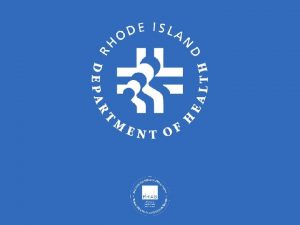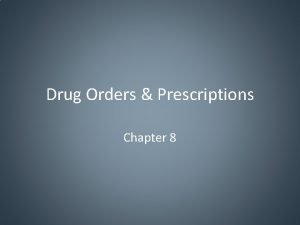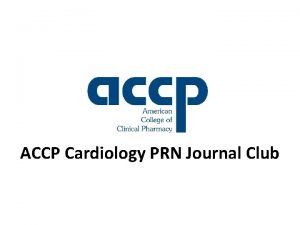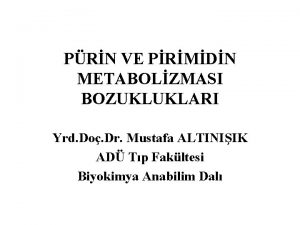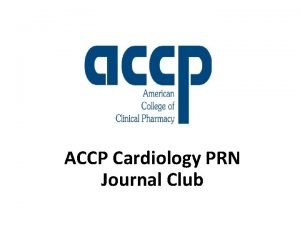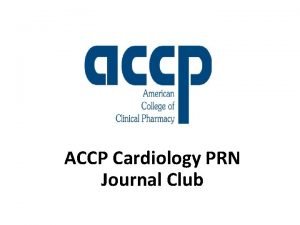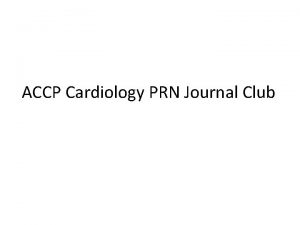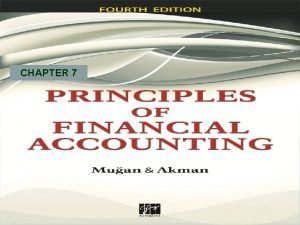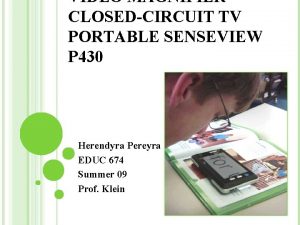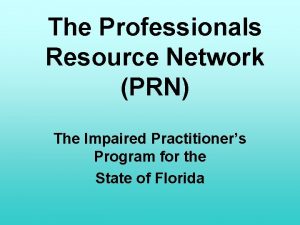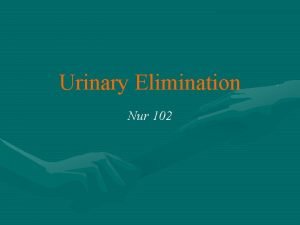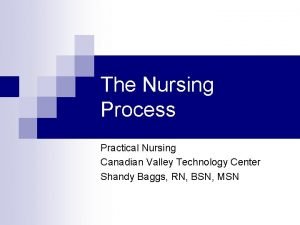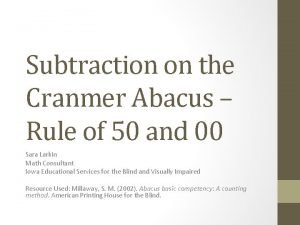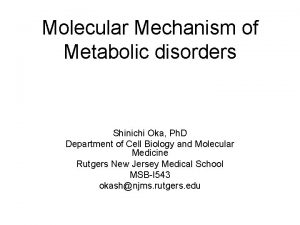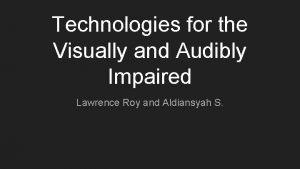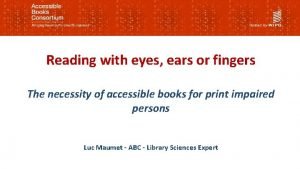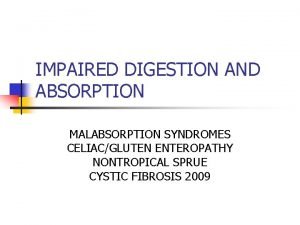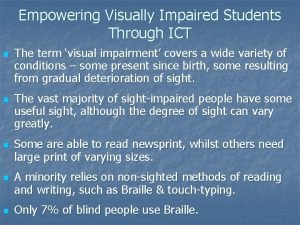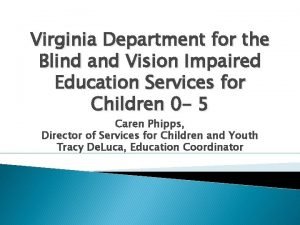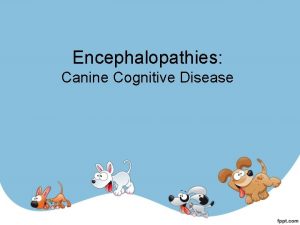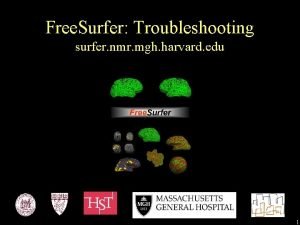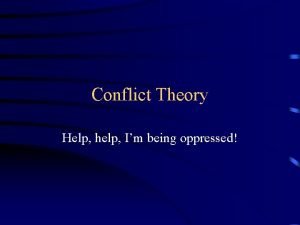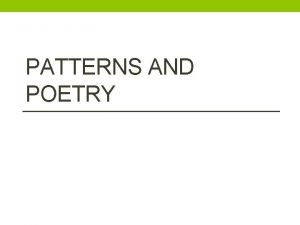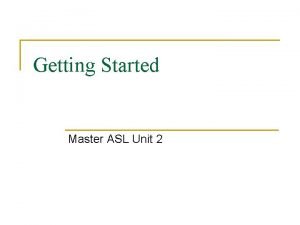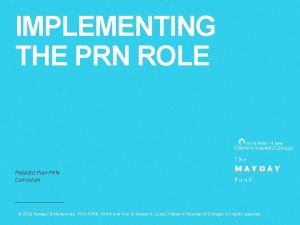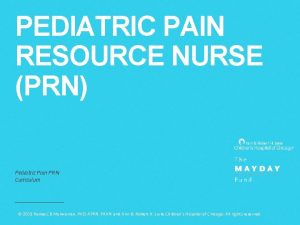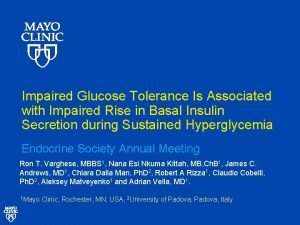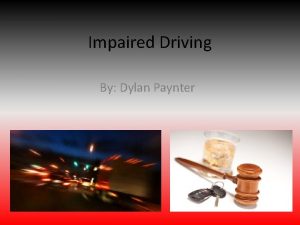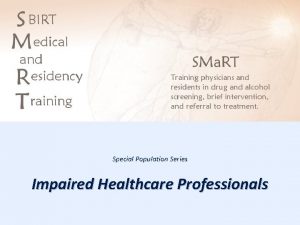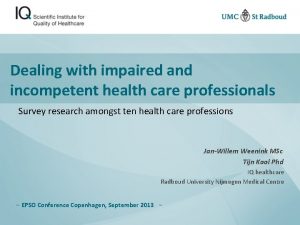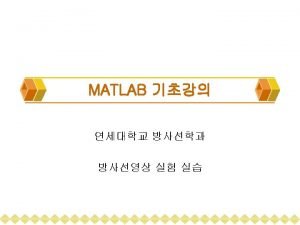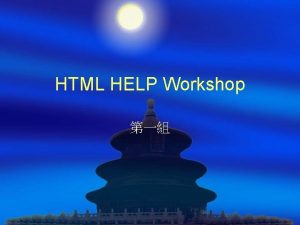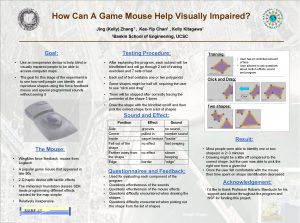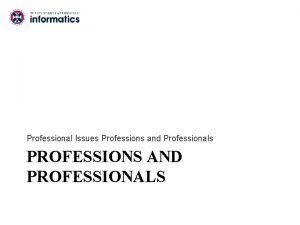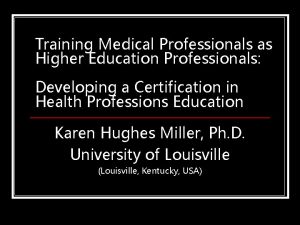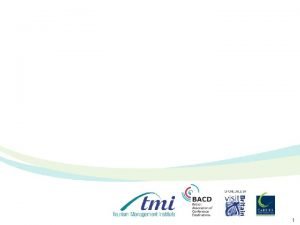Help for Impaired Professionals Part I PRN John

























































- Slides: 57

Help for Impaired Professionals - Part I PRN John C. Tanner, D. O. , Dip. ABAM, FASAM, CCFC, MRO PM Thurs. April 30, 2015 5: 30 to 5: 50

Disclosure of Relevant Financial Relationships Name Commercial Interests Relevant Financial Relationships: What Was Received Relevant Financial Relationships: For What Role John C Tanner, DO, Dip. ABAB, FASAM, CCFC, MRO Reckitt Benckiser Honorarium Consultant & Speaker BDSI Honorarium Consultant & Speaker Orexo Honorarium Consultant & Speaker No Relevant Financial Relationships with Any Commercial Interests

John C. Tanner, DO, Dip. ABAM, FASAM, CCFC, MRO • Medical Director for Intervention Project for Nurses – Florida (IPN). • Former Assistant Medical Director for Professionals Resource Network (PRN). • Medical Director for West Virginia Restore. • One of 6 Directors-at-Large for the American Society of Addiction Medicine’s Board of Directors - elected for 2 consecutive terms through 2019. • Fellow of the American Society of Addiction Medicine. • Serving on the Board of Directors for the Florida Society of Addiction Medicine. • Inaugural Diplomate of the American Board of Addiction Medicine. • Adjunct Assistant Professor - Department of Psychiatry – University of Florida School of Medicine. • Private Addiction and Behavioral Medicine practice since 1984. • One of 3 Principle Investigators for the FDA Phase 2 and 3 Clinical Trials for approval of Suboxone® Film. • Medical Review Officer – MROCC Certified. • Clinically Certified Forensic Counselor.

Are you or a health professional you know not firing on all eight? • Is it impairing functioning or judgment? • Might it be related to a psychoactive substance or mental health issue?

Eight areas involved with survival and addiction Executive function & inhibitory control (1 & 2) PFC ACG OFC Motivation & drive (3 & 4) 1) PFC = prefrontal cortex 3) OFC = orbitofrontal cortex 5) NAc = nucleus accumbens 7) Hipp = hippocampus Memory & learning (7 & 8) Hipp SCC NAc VP Amyg Reward & Salience (5 & 6) 2) ACG = anterior cingulate gyrus 4) SCC = subcallosal cortex 6) VP = ventral pallidum 8) Amyg = amygdala

This is a story that can have a bad outcome or a good outcome depending on how you handle it.

The consequences of addiction: Prison Accidental death Suicide Other bad outcomes

The consequences of addiction: prison

A consequence of addiction: Accidental death

The consequences of addiction: accidental overdose

A consequence of addiction: Suicide

The consequences of addiction: errors in judgment

The consequences of addiction: harm to patient

The consequences of addiction: medical malpractice suits

The consequences - marital and family dysfunction

Mental health problems such as Bipolar Affective Disorder, Eating Disorders and others that can result in impairment need to be monitored ---

Offending sexual boundaries

Impaired practitioner legislation provides: Recognition that illness and recovery can be mitigating factors in Licensing Board action. An opportunity for a licensee to reenter practice after satisfactorily completing appropriate treatment and demonstrating progress with recovery.

Impaired practitioner legislation provides: Increased incentive for self reporting. Early intervention. Increased incentive for entry into treatment.

Reporting to impaired practitioner program vs. Licensing Board: Professionals Resource Network and Intervention Project for Nurses: Are confidential and provide for treatment along with advocacy. Licensing Boards: Information becomes public and action is more likely disciplinary.

Thank you for listening (Part II is tomorrow) Questions John C. Tanner, DO, Dip. ABAM, FASAM, CCFC, MRO IPN# 800 -840 -2720 PRN# 800 -888 -8776 My Ext 146

Help for Impaired Professionals - Part II PRN John C. Tanner, D. O. , Dip. ABAM, FASAM, CCFC, MRO Friday May 1, 2015 4: 55 to 5: 15 PM

Disclosure of Relevant Financial Relationships Name Commercial Interests Relevant Financial Relationships: What Was Received Relevant Financial Relationships: For What Role John C Tanner, DO, Dip. ABAB, FASAM, CCFC, MRO Reckitt Benckiser Honorarium Consultant & Speaker BDSI Honorarium Consultant & Speaker Orexo Honorarium Consultant & Speaker No Relevant Financial Relationships with Any Commercial Interests

JOHN C. TANNER, DO, DIPABAM, FASAM, CCFC, MRO • Medical Director for Intervention Project for Nurses – Florida (IPN). • Former Assistant Medical Director for Professionals Resource Network (PRN). • Medical Director for West Virginia Restore. • One of 6 Directors-at-Large for the American Society of Addiction Medicine’s Board of Directors - elected for 2 consecutive terms through 2019. • Fellow of the American Society of Addiction Medicine. • Serving on the Board of Directors for the Florida Society of Addiction Medicine. • Inaugural Diplomate of the American Board of Addiction Medicine. • Adjunct Assistant Professor - Department of Psychiatry – University of Florida School of Medicine. • Private Addiction and Behavioral Medicine practice since 1984. • One of 3 Principle Investigators for the FDA Phase 2 and 3 Clinical Trials for approval of Suboxone® Film. • Medical Review Officer – MROCC Certified. • Clinically Certified Forensic Counselor.

Are you or a health professional you know not firing on all eight? • Is it impairing functioning or judgment? • Might it be related to a psychoactive substance or mental health issue?

The 8 that are not firing are not here

The 8 gray-matter areas that are not firing are here

The 8 nuclei are divided in these regions Limbic Region Pre Frontal Cortex

Treatment: the target areas Pre Frontal Cortex Limbic Region Role: Reward, Emotions, Drive Generation Intervention: Pharmacotherapy Role: Decision Making, Impulse Control, Judgment Intervention: Counseling, Mutual Support So what does this have to do with safety?

Eight areas involved with survival and addiction Executive function & inhibitory control (1 & 2) PFC ACG OFC Motivation & drive (3 & 4) 1) PFC = prefrontal cortex 3) OFC = orbitofrontal cortex 5) NAc = nucleus accumbens 7) Hipp = hippocampus Memory & learning (7 & 8) Hipp SCC NAc VP Amyg Reward & Salience (5 & 6) 2) ACG = anterior cingulate gyrus 4) SCC = subcallosal cortex 6) VP = ventral pallidum 8) Amyg = amygdala

A more precise anatomic location of the 8 areas 2 1 4 3 7 5 6 8 Brain centers involved in survival and addiction

What is it that makes us survive and thrive as people? • Does it a have a powerful influence on our behavior? • How does it work to make us behave to survive or thrive? • Can it be influenced by anything? • If influenced, by what?

Social needs: Does this relate to survival?

Food & fluids: Is this really about survival?

Sexual drive: Is this really about making babies? ? ?

Gender differences in cerebral activation when viewing erotic stimuli in f. MRI For analysis of specific activation, the contrast images of all groups were entered into a two-sample t-test. Interaction-related increase in MR signal is superimposed on three orthogonal sections of 3 -D T 1 weighted standard brain. When viewing erotic film excerpts, statistical parametric maps of areas activated more prominently in men compared with women. Results show activation of left thalamus, left amygdala, anterior cingulate, bilateral orbitofrontal, and insular cortex Reference: University Clinic Essen 03/01/2006; Elke Gizewski, MD, Elke Gizewski

f. MRI images of a woman's brain throughout an orgasm • • • More than 30 areas of the brain are active during the event, including those involved in touch, memory, reward and even pain PFC becomes more active during orgasm, whether it’s achieved through physical touch or thought alone PFC evidently “shuts off” during orgasm – especially a region of the orbitofrontal cortex (OFC), which is involved in the process of selfcontrol References: Rutgers University and the University of Groningen in the Netherlands

Executive function/inhibitory circuits Interventions: psychotherapy and mutual community supports PFC ACG Executive function & inhibitory control PFC = prefrontal cortex ACG = anterior cingulate gyrus

Executive function/inhibitory circuits – Intervention: Facilitated support groups Where peer mentoring and healing occurs PFC = prefrontal cortex FSG ACG = anterior cingulate gyrus

Executive function/inhibitory circuits – Intervention: mutual support groups PFC = prefrontal cortex ACG = anterior cingulate gyrus Alcoholics Anonymous (aa. org), Narcotics Anonymous, Women for Sobriety (womenforsobriety. org), Abstinence based SMART Recovery(smartrecovery. org), Secular Organizations for Sobriety (secularsobriety. org), faith based support group like Celebrate Recovery

IPN/PRN – Toxicology Testing A critical aspect of monitoring Or, as the nurses say “I pee’n for IPN” Executive function/inhibitory circuits – Intervention: Reinforcement of inhibitory supports with toxicology testing PFC = prefrontal cortex ACG = anterior cingulate gyrus

Executive function/inhibitory circuits Intervention: Psychotherapy is some times required PFC = prefrontal cortex ACG = anterior cingulate gyrus

Motivation & drive circuits - Intervention: medications Timelines for FDAApproved Pharmacotherapies Antabuse® (disulfiram) Vivitrol 380 mg® (naltrexone for extendedrelease injectable suspension) Re. Via®/Depade® Actually works in inhibitory control area (PFC & ASG) (naltrexone) 1951 1994 2006 Alcohol Dependence Campral® (Acamprosate) Suboxone Film® (buprenorphine/naloxone) Methadose®/Dolophine® (methadone) 1964 Re. Via®/Depade® (naltrexone) LAAM 1984 1993 Subutex®/Suboxone® (buprenorphine/naloxone) 2002 2010 Zubsolv® (buprenorphine/ naloxone) 2013 2014 Opioid Dependence OFC = orbitofrontal cortex SCC = subcallosal cortex Vivitrol 380 mg® (naltrexone for extended-release Bunavail® injectable suspension) (buprenorphine/naloxone)

Motivation & drive circuits - Interventions: Appropriate use of the brain’s natural rewards Enhance the healthy: • Social activities • Food & Water • Sex (When appropriate) • Etc. (i. e. music hobbies) OFC = orbitofrontal cortex SCC = subcallosal cortex

Reward circuits: Interventions: medications and avoidance of psychoactive substances NAc VP Reward region NAc = nucleus accumbens VP = ventral pallidum VP receives dopaminergic inputs from the ventral tegmental area, and GABAergic inputs from the nucleus accumbens. It is the relay nucleus from the nucleus accumbens to the medial dorsal nucleus. The nucleus accumbens projects to the medial dorsal nucleus via GABAergic medium spiny neurons. It is thus a component of the mesolimbic dopamine system, a pathway thought to be the major neural correlate of addiction. Addictive drugs facilitate dopamine release in this system. The VP is thought to be the primary craving area.

Reward circuits: Interventions: medications and avoidance of psychoactive substances • Using a physician who is knowledgeable about prescribing for people with addiction • Avoiding medications that increase dopamine release or block dopamine reuptake (i. e. opiates, stimulants, sedative/hypnotics etc. ) • Appropriate use of antagonist or partial agonist medications NAc = nucleus accumbens VP = ventral pallidum

What are the known underlying mechanisms of relapse? 1 Drugs that reward * * Reference: 1. Shaham et al. , 2003 * NAc = nucleus accumbens VP = ventral pallidum

Memory storage & circuits: Interventions: expanding memory i. e. “next bottom”, recalling consequences and relearning new behaviors. Hipp Amyg Hipp = hippocampus Amyg = amygdala Memory & learning

Memory storage & circuits: Interventions: expanding memory and new learning • Next bottom (working with therapist). • Learning recovery tools/12 -steps. • Recalling negative consequences of addiction behaviors. • Relearning new behaviors that do not involve psychoactive substances (i. e. hobbies, new sober social connections, developing spirituality, exercise, healthy diet habits etc. ) Hipp = hippocampus Amyg = amygdala


Chemical – MR Spectroscopy (MRS) • Safe (No X-Rays) • Noninvasive • Provides a snapshot of the neurochemistry within a defined volume of interest • Significantly increases the accuracy and specificity of conventional MR imaging in differentiating between disease states Hunters Angle

Some of the metabolites seen on MRS ppm Metabolite Properties 0. 9 -1. 4 Lipids Products of brain cell destruction 1. 3 Lactate Product of anaerobic glycolysis 2. 0 N-acetylaspartate (NAA) Neuron cell marker 2. 2 -2. 4 Glutamine (Gtx)/GABA Neurotransmitters 3. 0 Creatine (Cr) Energy metabolism 3. 2 Choline (Cho) Cell membrane marker 3. 5 myo-inositol (m. I) Glial cell marker, osmolyte, hormone receptor mechanisms 1. 48 Alanine Present in meningiomas

Magnetic Resonance Spectroscopic Imaging and Relevance to Addiction Summary of anatomically related metabolite changes with drugs of abuse N-acetylaspartate Choline Creatine myo-inositol Amphetamine ___ ___ Increase (TL) None (PFC) Methamphetamine Decrease (BG, FGM) Increase (FGM) Decrease (BG) Increase (FGM, FWM) MDMA Decrease (FGM, HP) None (FGM, PWM, NC, HP, OCC) ___ Increase (PWM) None (FMG, PWM, OCC) Cocaine Decrease (FMG, TAH) Increase (BG) Increase (PWM) Increase (FGM) Ref: Ann N Y Acad Sci. 2010 February; 1187: 148– 171. doi: 10. 1111/j. 1749 -6632. 2009. 05143. x

Magnetic Resonance Spectroscopic Imaging and Relevance to Addiction Summary of reported neurotransmitter changes with drugs of abuse Methamphetamine Glutamate GABA Decrease in frontal gray matter _____ (Ernst & Chang, 2008) Cocaine _____ Decrease in prefrontal cortex (Ke et. al. , 2004) Decrease in OCC (Hetherington et al. , 2000) Opiates Decrease in ACC _____ (Yucel et al, 2007) Cannabis Decrease in basal ganglia _____ (Chang et al. , 2006) Alcohol Nicotine Ref: Ann N Y Acad Sci. 2010 February; 1187: 148– 171. doi: 10. 1111/j. 1749 -6632. 2009. 05143. x Increase in ACC (Lee et al, 2007) Decrease in BG (Miese et al. , 2006) Decrease in OCC No change in HP Decrease in OCC (Galliant et al. , 2008) (Epperson et al. , 2005) (Behar et al. , 1999)

Magnetic Resonance Spectroscopic Imaging and Relevance to Addiction Simplified summary of overlapping metabolite findings across drug classes Metabolite Decrease Increase N-acetylaspartate (NAA) Methamphetamine, MDMA, Cocaine, Opiates, Cannabis, Alcohol, Nicotine, Toluene Cocaine (acute administration) Choline (Cho) Cannabis, Alcohol Methamphetamine, Cocaine, Alcohol Creatine (Cr) Methamphetamine Cocaine, Cannabis, Alcohol Myo-Inositol (m. I) _____ Amphetamine, Methamphetamine, MDMA, Cocaine, Alcohol, Toluene Glutamate (Glx) Methamphetamine, Opiates, Cannabis Alcohol GABA Cocaine, Alcohol, Nicotine ____ Ref: Ann N Y Acad Sci. 2010 February; 1187: 148– 171. doi: 10. 1111/j. 1749 -6632. 2009. 05143. x

Summary of MRS Drugs of Abuse Findings • Reductions in NAA and elevations in m. I were observed almost universally indicating that drugs of abuse in general have a profound impact on neuronal health, energy metabolism and inflammatory processes. • The next most common metabolite changes involved alterations in Cho and Cr, suggesting that methamphetamine, cocaine, cannabis, and alcohol negatively influence cell membrane turnover as well as energy maintenance. • Methamphetamine, opiates, cannabis, and alcohol were found to alter Glx to some extent, while GABA was reduced by cocaine, alcohol and nicotine, together suggesting that drugs of abuse adversely impact neurotransmission.

Thank you for listening Questions John C. Tanner, DO, Dip. ABAM, FASAM, CCFC, MRO IPN# 800 -840 -2720 146 PRN# 800 -888 -8776 My Ext
 Moms prn
Moms prn Parts of drug order
Parts of drug order Prn order example
Prn order example Accp cardiology prn
Accp cardiology prn Dr prn
Dr prn Dr prn
Dr prn Club prn
Club prn Club prn
Club prn Accp cardiology prn journal club
Accp cardiology prn journal club Impaired receivables
Impaired receivables Herendyra
Herendyra Impaired practitioner program florida
Impaired practitioner program florida Ngt nursing diagnosis
Ngt nursing diagnosis Impaired urinary elimination
Impaired urinary elimination Impaired gas exchange subjective data
Impaired gas exchange subjective data Cranmer abacus
Cranmer abacus One shade the more one ray the less
One shade the more one ray the less Shinichi oka
Shinichi oka Audibly impaired
Audibly impaired Impaired eyes and ears
Impaired eyes and ears Impaired digestion
Impaired digestion Ict for visually impaired students
Ict for visually impaired students Virginia department for the blind and vision impaired
Virginia department for the blind and vision impaired Learning outcomes of input and output devices
Learning outcomes of input and output devices Canine cognitive dysfunction
Canine cognitive dysfunction Story boxes for visually impaired
Story boxes for visually impaired Help us help you
Help us help you I m being oppressed
I m being oppressed Becoming a helper 7th edition
Becoming a helper 7th edition Self help and community help is the motto of
Self help and community help is the motto of My mother makes me chicken poem
My mother makes me chicken poem Master asl unit 2
Master asl unit 2 Iso 22301 utbildning
Iso 22301 utbildning Novell typiska drag
Novell typiska drag Nationell inriktning för artificiell intelligens
Nationell inriktning för artificiell intelligens Ekologiskt fotavtryck
Ekologiskt fotavtryck Varför kallas perioden 1918-1939 för mellankrigstiden?
Varför kallas perioden 1918-1939 för mellankrigstiden? En lathund för arbete med kontinuitetshantering
En lathund för arbete med kontinuitetshantering Adressändring ideell förening
Adressändring ideell förening Personlig tidbok för yrkesförare
Personlig tidbok för yrkesförare Sura för anatom
Sura för anatom Vad är densitet
Vad är densitet Datorkunskap för nybörjare
Datorkunskap för nybörjare Tack för att ni lyssnade bild
Tack för att ni lyssnade bild Hur skriver man en tes
Hur skriver man en tes För och nackdelar med firo
För och nackdelar med firo Nyckelkompetenser för livslångt lärande
Nyckelkompetenser för livslångt lärande Påbyggnader för flakfordon
Påbyggnader för flakfordon Formel för lufttryck
Formel för lufttryck Svenskt ramverk för digital samverkan
Svenskt ramverk för digital samverkan Kyssande vind
Kyssande vind Presentera för publik crossboss
Presentera för publik crossboss Argument för teckenspråk som minoritetsspråk
Argument för teckenspråk som minoritetsspråk Plats för toran ark
Plats för toran ark Klassificeringsstruktur för kommunala verksamheter
Klassificeringsstruktur för kommunala verksamheter Fimbrietratt
Fimbrietratt Bästa kameran för astrofoto
Bästa kameran för astrofoto Centrum för kunskap och säkerhet
Centrum för kunskap och säkerhet
